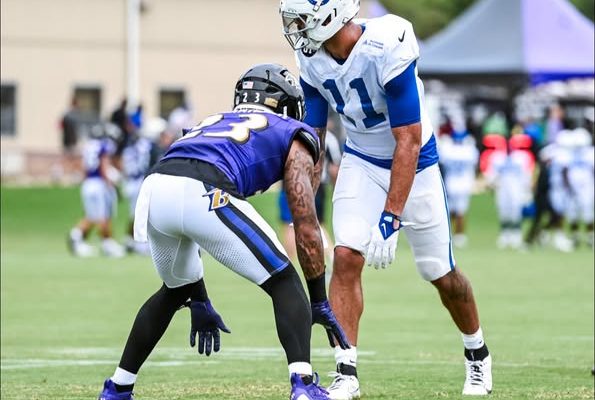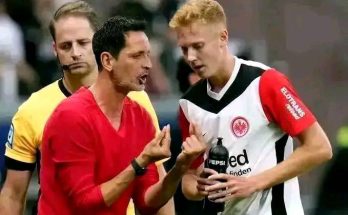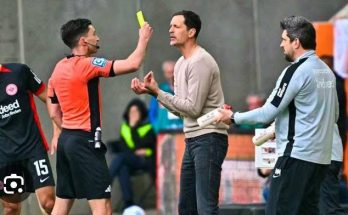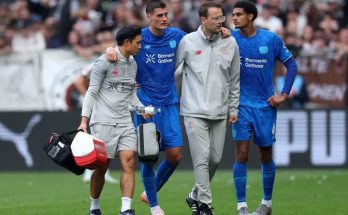Tempers flared and fists flew at the Under Armour Performance Center on Tuesday, as the Baltimore Ravens and Indianapolis Colts engaged in a fiery joint practice that culminated in the ejection of Ravens’ second-year cornerback, Nate Wiggins.1 The skirmish, which cleared both sidelines, was a stark reminder of the intense competition that defines training camp, especially when two different franchises come together to test their mettle. The incident has since become a major talking point, raising questions about player discipline, the nature of joint practices, and the mindset of a young player the Ravens are counting on to be a key contributor in the upcoming season.
The altercation reportedly began during a punt return drill, a phase of the game notorious for its physicality and the high-octane energy of players fighting for a roster spot.2 According to reports from those in attendance, a late shove by a Ravens backup cornerback, Keyon Martin, on Colts running back Tyler Goodson ignited the initial confrontation. Goodson retaliated, and the situation quickly escalated.3 It was at this point that Wiggins, who was on the sideline, ran onto the field and became an active participant, throwing punches.4 His actions led to a full-blown brawl that required coaches and officials to intervene and separate the teams.5 As a result, both Wiggins and Goodson were ejected from practice, with Wiggins being sent back to the team facility to watch the remainder of the session from indoors.6
The sight of a high-profile player like Wiggins, a first-round pick in the 2024 NFL Draft, being thrown out of practice for fighting is a cause for concern for any team. While joint practice scuffles are not uncommon, a player leaving the sideline to join an altercation and throwing punches is a clear violation of a well-understood, unwritten rule. Ravens head coach John Harbaugh, a veteran of these joint practices, has often spoken about the need for his players to maintain their composure and avoid situations that can lead to ejections or, worse, injuries.7 For a team with Super Bowl aspirations, a player losing his cool in such a manner is a potential red flag. It begs the question of whether Wiggins possesses the maturity and discipline to handle the pressure of an NFL game, where emotional control is paramount.
However, the incident is not as simple as a young player losing his temper. It’s also a testament to the fierce loyalty and camaraderie that exists within a locker room. Wiggins’ actions, while ill-advised and deserving of punishment, were in defense of a teammate.8 The fact that he ran from the sideline to get involved shows a certain level of a “for the team” mentality. While his execution was poor, the underlying sentiment is something coaches often want to see from their players. Ravens defensive lineman Nnamdi Madubuike, who was reportedly far from the action, was quoted as saying, “I heard Nate was slugging somebody or something.9 I don’t know, but it was crazy.” This comment, and others from players on both sides, suggest a level of understanding that such things can happen in the heat of the moment, especially when players have been beating on each other for weeks and are finally getting to face an opponent in a different colored jersey.
The broader context of joint practices is crucial to understanding this event. These sessions are designed to simulate game-like situations and provide a valuable measuring stick for coaches and players. They allow teams to work against unfamiliar schemes and see how their players stack up against different talent. The downside, as was on full display, is that the intense competition and heightened emotions can easily boil over. Harbaugh himself acknowledged this after practice, noting that special teams drills are often a flashpoint for such incidents. “You can pretty much chalk it up and predict that it’s going to happen, because it’s one of those full-field, really competitive drills,” Harbaugh said. Colts safety Camryn Bynum echoed this sentiment, stating, “You can’t get out of a joint practice without a fight.” These comments suggest that the fight, while regrettable, was not entirely unexpected.
For Wiggins, the incident is a teaching moment. He is a talented player with a promising future, and he had a strong rookie season in 2024, finishing with 33 tackles, 13 passes defended, and an interception returned for a touchdown.10 He has been lauded for his speed and coverage skills, and the Ravens are counting on him to be a lockdown corner for years to come. The fight, however, will be a part of his learning curve. It’s an opportunity for the coaching staff to reinforce the importance of discipline and keeping your cool, even when emotions are running high. The Ravens have a veteran-led locker room, and it’s likely that his teammates will also provide some guidance.
While the fight was the headline of the day, it’s important to note that the practice itself was not a complete disaster. There were plenty of other storylines, both positive and negative, that emerged from the field. For example, Colts wide receiver Adonai Mitchell reportedly had a strong day, including a deep ball catch against Wiggins where he made a nice body adjustment to secure the ball.11 On the other side, Ravens tight end Charlie Kolar had a standout performance, making several contested catches and showing he is ready to step up in the absence of an injured Isaiah Likely. These are the kinds of takeaways that coaches and general managers are truly looking for in these practices.
The Ravens and Colts will meet again on Thursday for their first preseason game, and while the starters are not expected to play, the lingering tension from Tuesday’s practice will likely add an extra layer of intensity to the game. For players like Wiggins and Goodson, who were both ejected, the memory of the scuffle will be fresh in their minds. It’s a reminder that even in a practice setting, the competitive spirit of the NFL is always at play, and sometimes, that spirit manifests in ways that are both thrilling and troubling.
In the end, Nate Wiggins’ ejection from practice is a microcosm of the delicate balance between aggression and discipline that every football player must master. It’s a tale of a young player defending a teammate, but doing so in a way that goes against the rules of the game. The Ravens and their coaching staff will now be tasked with ensuring that Wiggins learns from this experience and channels his passion and fire into a positive force on the field, rather than a liability. The 1500 words on the incident serve not just as a recap of a training camp fight, but as a deeper dive into the psychology of competition, loyalty, and the constant lessons that even the most talented athletes must learn.



